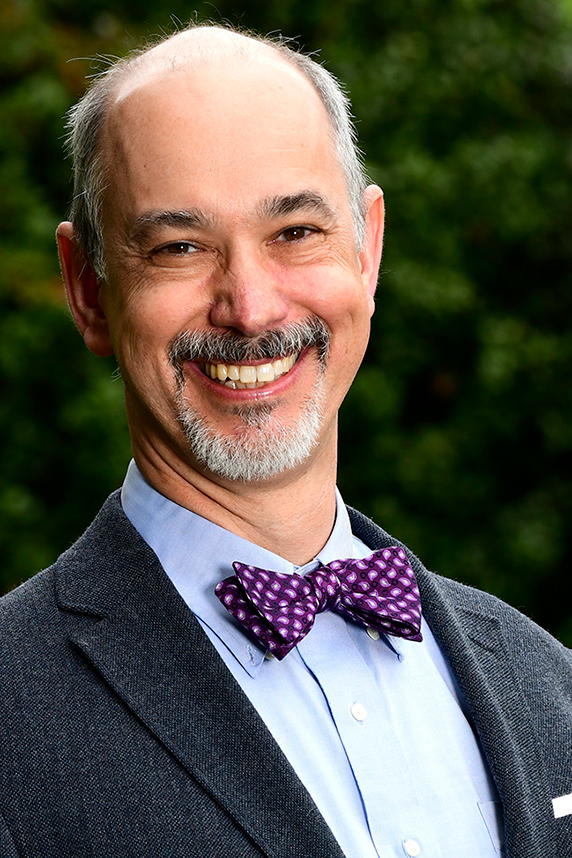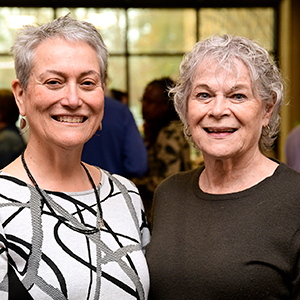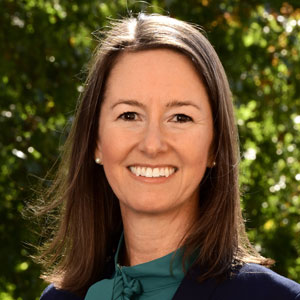NIEHS Director Rick Woychik, Ph.D., has announced his selection of David Balshaw, Ph.D., as the next director of the Division of Extramural Research and Training (DERT) effective April 23.

“Throughout his 20-year career with the NIEHS, including the last eleven months serving as the Acting DERT Director, Dr. Balshaw has proven his ability to manage substantial financial resources, oversee a comprehensive environmental science research portfolio, and work both with, and for, his DERT colleagues to achieve our collective NIEHS mission,” said Woychik in an announcement to staff on April 17.
Balshaw, a biophysicist, is recognized as a leader in environmental health sciences and exposomics, which is the study of the sum of environmental exposures and the body’s response to those exposures.
“I'm committed to seeing the institute and the division become an even better version of themselves by being more responsive to the needs of the research community, as well as the most vulnerable populations, to move the science of environmental health forward,” Balshaw said.
Searching for solutions
Balshaw’s quest to understand ever-changing science began decades ago. Though he had planned to attend medical school, an undergraduate research experience changed everything.
“One day, a light bulb went off,” Balshaw said. “The thrill that you get when you know something that has never been known before, that's really cool.”
Though that initial thrill only lasted about 15 minutes — his undergraduate research advisor explained Balshaw’s finding was not entirely new — the search for discovery captivated him. He went on to earn a Ph.D. in the Department of Pharmacology and Cellular Biophysics at the University of Cincinnati, and he completed his postdoctoral training in the Department of Biochemistry and Biophysics at the University of North Carolina.
Today, Balshaw leads an 80-person division and oversees a $500 million budget with the goal of inspiring discoveries across the country.
“We're trying to understand that which we have never understood before,” Balshaw said.
Complex environmental exposures
Central to Balshaw’s work is thinking about environmental exposure as a complex problem.
“We're not exposed to a single chemical at a single point in time," Balshaw explained. "Rather, we are exposed to an infinite number of factors that all are highly variable in time and space. We need the capability to look at all of that complexity and embrace it in terms of the environmental exposures and the impact on the human system.”
Understanding the dynamics of how environmental exposures affect an individual person’s biological system is the focus of much research supported by DERT via grant funding. For example, a grantee may seek to understand how high levels of air pollution affect biological pathways related to inflammation and oxidative stress, but those same pathways are also impacted by countless other environmental exposures leading to different outcomes.

“Our mandate is to do the research to address environmental health problems and improve human health, but not to solve every problem,” Balshaw said. “As we are doing that research, we should be thinking about how we can apply it to solving the problems that are impacting the health of individuals, the U.S. population, and the global population.”
Looking to the future
What most excites Balshaw about taking on the new role is the opportunity to shape the study of environmental health on a larger scale, and to set an agenda to move the science forward.
“How we can best translate environmental health science — from fundamental technology development and mechanistic research to epidemiology and practice — to improve clinical health and public health is a challenge I’m looking forward to,” Balshaw said.
Balshaw’s goals for the division moving forward: operating more efficiently, and collectively strategizing to build what environmental health will be 10 and 20 years from now.
DERT sets the scientific agenda by working with its grantee communities to plan the future of the field. In addition, the division engages with scientists and communities to learn where they see future challenges and opportunities and how they can help NIEHS address the role of environmental exposures.
Fostering collaborations within the environmental health community and across the National Institutes of Health to leverage resources is also a priority.
“NIEHS is a unique institute in that we do not address a single organ system or a single disease,” Balshaw said. “We focus on understanding the environment’s role in contributing to health and every disease in every organ system.”
Despite the breadth of the institute’s mission, the NIEHS grant budget ranks in the middle when compared with the 27 other institutes and centers, such as the National Cancer Institute and the National Institute on Aging, all of which comprise the National Institutes of Health. The NIEHS budget appropriation surpassed a billion dollars for the first time this fiscal year.
Balshaw lives in Hillsborough, North Carolina, with his wife and whichever of their five children (and one grandson) happen to be around on any given day. He enjoys hiking, woodworking, ringing handbells, and eating all of the fine food he can get his hands on.
(Caroline Stetler is Editor-in-Chief of the Environmental Factor, produced monthly by the NIEHS Office of Communications and Public Liaison.)









